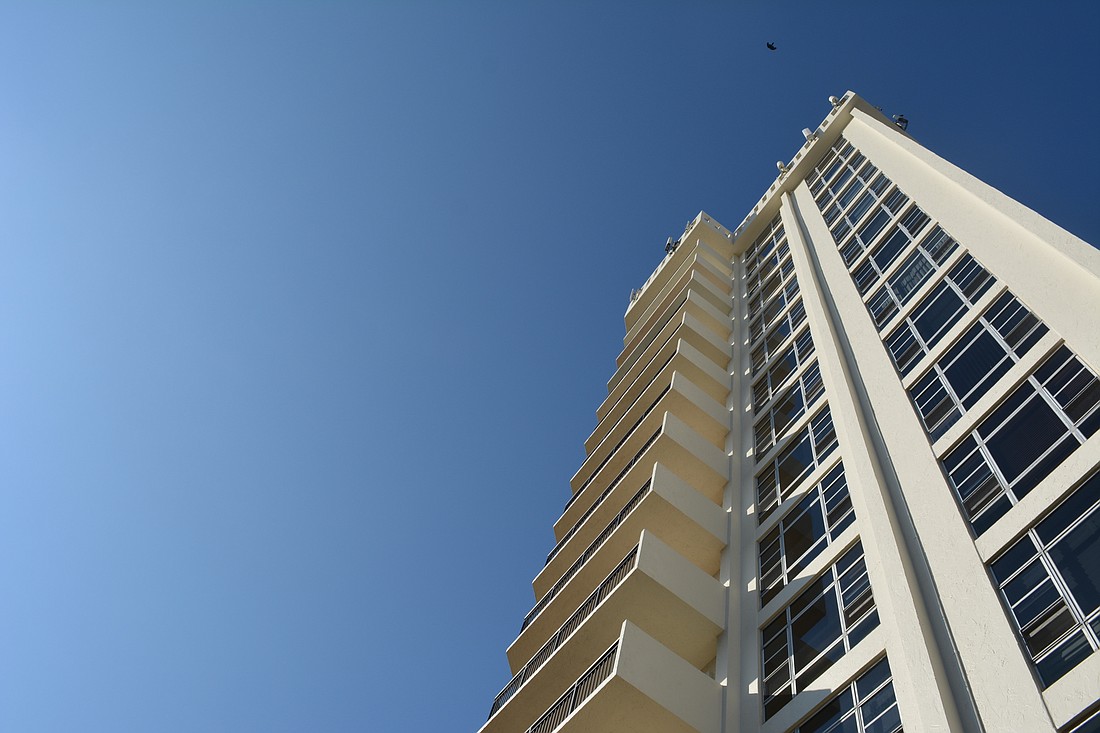- April 24, 2024
-
-
Loading

Loading

Future redevelopment on Longboat Key has become such a hot-button issue, Planning and Zoning Board Chairman Jim Brown has taken to carrying a list of nonconforming properties and other land-use data with him around town.
“I can’t go into Publix without people asking me about this stuff,” he said during Tuesday’s meeting.
And although it generated nearly two hours of discussion at the meeting, the island is closer to new regulations regarding planned-unit developments, or PUDs, which are designed to encourage redevelopment of old properties through a voluntary zoning process.
The board concluded roughly a year of deliberations about PUDs, with the same issue: How does the island balance flexibility of redevelopment with maintaining the character of the Key?
In the end, board members approved language in an ordinance that allows additional height — up to 80 feet over elevation — for new buildings, as long as buildings are set back 2.5 times the height of the building from Gulf of Mexico Drive. The recommendation now heads to the Town Commission for discussion and final consideration.
“This is not about one project or another, this about our whole island, and 80 feet is reasonable for the length of this island and the projects that may or may not come forward,” said Vice Chairwoman B.J. Bishop. Depending on the zoning a property falls within, the highest a building can be constructed currently is 65 feet.
The new ordinance also includes adding more distance from neighboring properties and providing plans to show no effects on the shadowing from taller buildings, planting vegetation to minimize the “canyon effect” from GMD, and even a determination from the Town Commission that the proposal is “consistent with the character of the surrounding area.”
“It is much easier to function when you have criteria that people understand before they show up at their first public hearing trying to twist your arm or buy enough ink in the newspaper to influence your decisions,” Bishop said.
But what about some gulf-front properties that are too shallow to meet the GMD setback requirements? At Tuesday’s meeting, board members, Planning, Zoning and Building Director Alaina Ray and Town Attorney Maggie Mooney-Portale settled on waivers that would give town commissioners discretion to reduce the setback distance.
“This is a little squishy for me,” Board Member George Symanski Jr. said of a portion of the new ordinance language.
“Well, things get squishy when you get flexible,” Ray said with a laugh.
Further clouding the process is the March 14 referendum for the redevelopment of the Colony Beach & Tennis Resort, which would likely use the PUD process. Unicorp National Developments President Chuck Whittall urged the planning board to set height limitations at eight stories, rather than 80 feet, and relax setback, open space and other requirements.
“It really is starting to feel like we’re being boxed in — literally — to where you’re building a big square building in the back center of the property, and that flexibility is being lost to create really beautiful architecture,” said Unicorp Senior Vice President Amy Schuemann.
Whittall said despite a conceptual plan that includes buildings taller than 80 feet, his team is willing to compromise with the town and residents after the referendum.
“I think if we’re successful in the referendum the voters will be sending a message that they’re generally accepting of the plan,” he said. “But, we have heard the community, and if they don’t want buildings over 10 stories, then we’re going to respect that.”